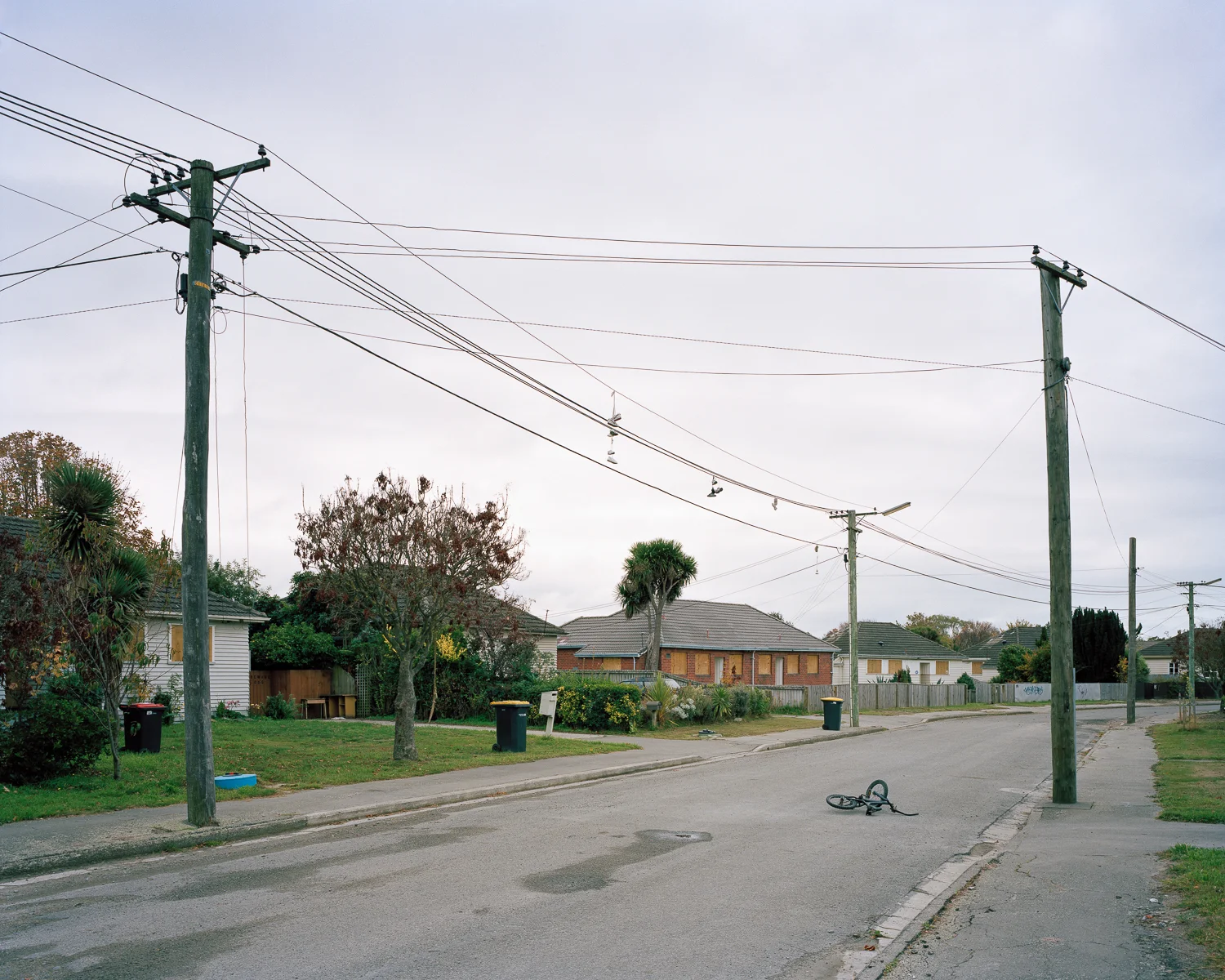













Images by: Tim Veling
- Selected images are depictions and not representative of Interviewees' individual experiences.
THX 4 THE MEMORIES - Created by: Tim J. Veling, Glenn Busch & Brigit Anderson.
Curated By : Christine McFetridge
Six years on my memory is slippery. At 4:35am on September 4, 2010, I can recall my cat flying over the top of me, waking me suddenly. I too, leapt out of bed. The only way I can think to describe walking to the doorframe is the sensation of walking through large waves at the beach–though without water the feeling is nightmarish. Once the initial shaking had stopped, I slowly made my way downstairs; wrapping myself in my fluffy pink dressing gown. The power was out. I wedged myself between the cushions of the couch, listening to the battery powered radio playing ‘Good Vibrations’ by the Beach Boys.
Our family home was in Avonhead, a suburb in Christchurch’s north-western suburbs, and we were lucky. Approximately ten kilometres east, in Avonside, residents’ homes were in pieces and liquefaction had seeped out of earth; the beginning of uncertainties that would continue for years. Five months later, on February 22, 2011, at 12:51pm, Cantabrians were again violently exposed to their unstable relationship with the land. Though this seismic event measured smaller on the Richter Scale than the September earthquake, it was shallow and in close proximity to the city. Avonside broke further apart and hundreds of people across the city lost their lives. Zoned red, a system of categorising areas depending on how habitable they were, Avonside residents continued the wait to learn what would become of their homes and properties.
In response to failed bureaucracy and unanswered questions, Avonside resident Lawrence Roberts started a blog to keep his neighbours informed. An admirer of Place in Time: The Christchurch Documentary Project, Roberts invited Glenn Busch, Tim J. Veling, and Brigit Anderson to record the changes to their community. Place in Time, founded and co-ordinated by Busch, began in 2000 and includes significant and insightful bodies of documentary photographic work, which consider all aspects of everyday life in Christchurch—New Zealand’s third largest city. With no guiding principles, Busch, Veling, and Anderson created Thx 4 the Memories; an extensive book and document comprising photographs, made by Veling, and stories, collected and edited by Busch with further black and white portraits taken by Anderson. The most destructive events in New Zealand’s recent history, the Christchurch Earthquakes literally altered the landscape.
A curated selection of photographs and stories from this project are featured here, however for further information and to view an online copy of the book please follow this link: http://www.timjveling.com/thx-4-the-memories.













